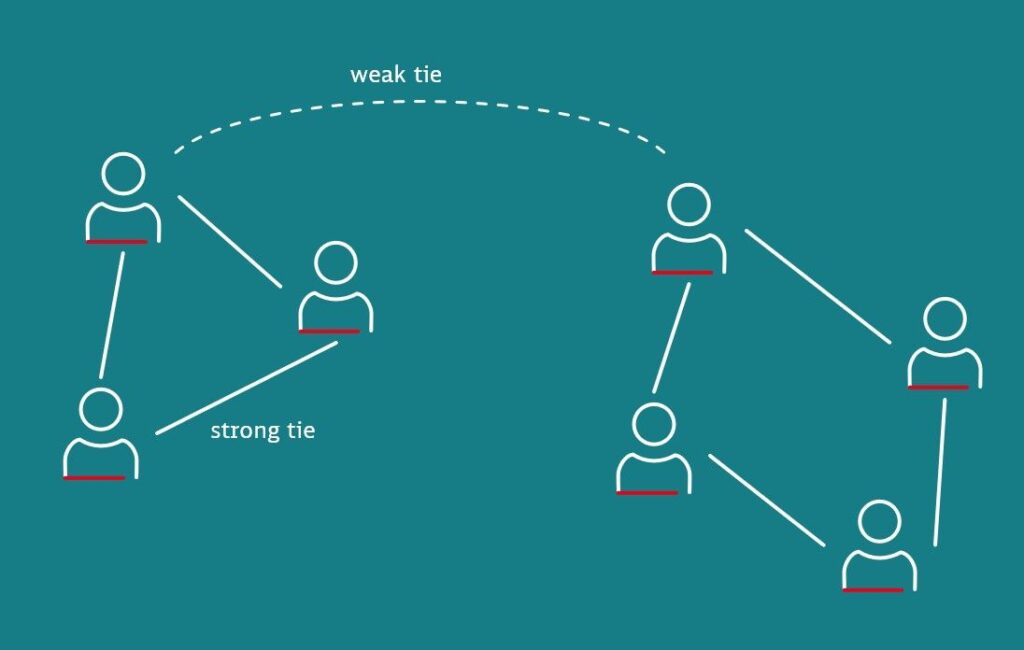Being pushed to work from home due to the pandemic made me ask myself, what is the secret sauce separating great teams and organisations from mediocre ones?
Some early and popular explanations pointed to ad-hoc meetings at coffee machines as the events where great collaboration and innovations happen. But do we want to leave the chances of having great teams to serendipity?
Searching for a better explanation led me to rediscover the concept of weak ties. Originally described by Nick Grannovetter in 1973, it underlined the importance of your outer circle of connections or a loose network of colleagues and acquaintances who most likely do not know each other. This is opposed to the inner circle, such as your project team, where all members know each other and build strong ties. For getting new information, ideas, and opportunities, weak ties are more important than strong ones.

This concept is an instrumental foundation for designing collaboration measures for a smart workplace—our new hybrid work model at DB Schenker Technology Centre in Warsaw. We observed that collaboration in the inner circles (strong ties) remains good. Project teams, scrum teams, and so on have adopted new ways of working quickly and with good results. In some cases, bringing everyone online has even helped to share information and engage team members by dismantling local subteams.
The real challenge with remote work was keeping weak ties in good shape. How do you create and nourish relations with that expert you may need once per quarter? Or, if you are a new joiner, how do you know who else can help you outside of your direct team?
To help our people build and maintain an outer circle of the network, we have started raising awareness of weak ties. As the next step, we have focused on supporting line managers and team leaders and have created a platform where they can find support from other colleagues, build new connections and exchange knowledge. Empowering our “primary care” leaders is the best way to support all employees. If team leaders are cared for, they will care for their team members.
And by the way, we still have coffee points in our office and encourage people to meet and talk. But now we are using them more consciously 🙂
And how do you make sure your organisation is more than a simple sum of teams?
Wojciech Pozarzycki, March 2025

